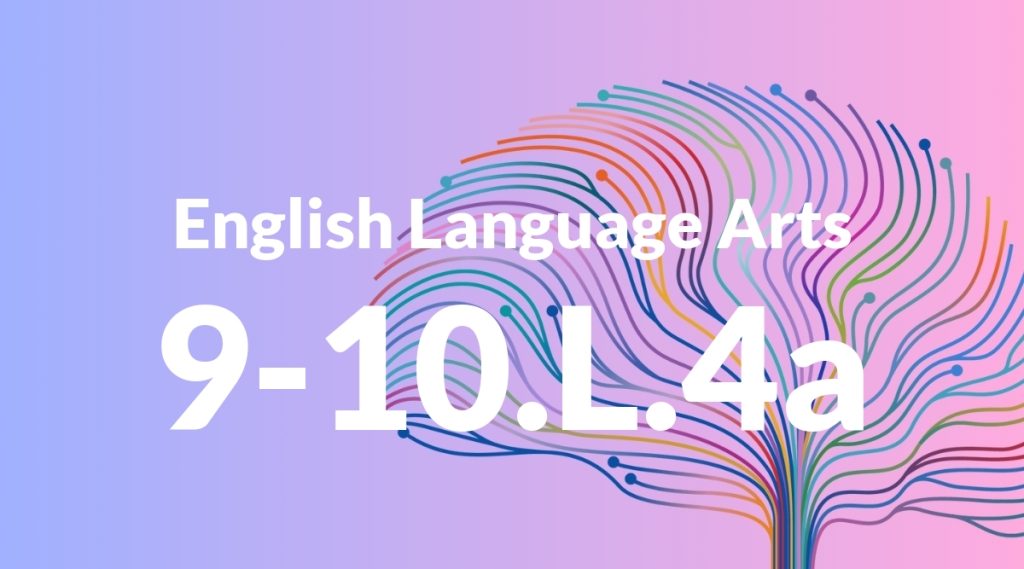Standard: 9-10.L.4a – Use context (e.g., the overall meaning of a sentence, paragraph, or text; a word’s position or function in a sentence) as a clue to the meaning of a word or phrase.
Grade level: Grade 9-10
Subject: English Language Arts
Domain: Language
Teacher Overview
This standard focuses on students using context to determine the meaning of unfamiliar words or phrases. It is important because it helps students become more independent readers and enhances their comprehension skills across all subjects. Students should be familiar with basic grammar, sentence structure, and identifying the main idea and supporting details in a text.
Mastering this standard will enable students to expand their vocabulary, improve reading comprehension, and apply context clues to more complex texts across various subjects.
Common Misconception 1
Some students may mistakenly believe that context clues are only found in the sentence with the unfamiliar word. This limits their ability to use broader textual clues.
Intervention 1
Introduce exercises where students practice finding context clues in surrounding sentences and paragraphs, not just the immediate sentence.
Common Misconception 2
Students might think the first meaning they infer is always correct, leading to misunderstandings.
Intervention 2
Teach students to verify their inferred meanings by looking for multiple context clues and using a dictionary when necessary.
Prerequisite Knowledge
Students should have a foundational understanding of basic sentence structure, parts of speech, and the ability to identify the main idea and supporting details in a text.
Subsequent Knowledge
After mastering this standard, students will be able to enhance their vocabulary acquisition, improve reading comprehension, and apply context clues to more complex texts in various subjects.
Instructional Activities
- Context Clue Scavenger Hunt
- Sentence Deconstruction Exercises
- Group Reading and Discussion
- Vocabulary Journals
- Context Clue Puzzles




